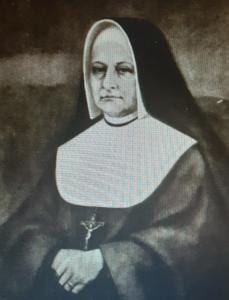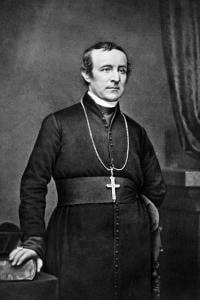
American Sisters and Social Justice
Many today are familiar with the photos of American women religious marching during the Civil Rights Movement. Catholic Sisters have advocated for social justice at every level– Sisters Simone Campbell, Sister Helen Prejean— as well as the martyrs Sisters Maura Clarke, Ita Ford, and Dorothy Stang. Until her early death from cancer in 1990, Servant of God Thea Bowman, a Franciscan Sister, was a powerful and tireless advocate for racial justice.
These Sisters are a powerful witness. Yesterday we noted that many women’s religious communities have recently sought to make reparations for their involvement in slavery. We know that some convents did have slaves. African American women were also excluded from white religious communities, in some cases almost until the start of the Civil Rights Movement.
African American Sisters
Because of this, they formed their own. In 1829, Servant of God Elizabeth Lange, a Haitian immigrant, led in forming the Oblate Sisters of Providence in Baltimore, for women of color. In New Orleans in 1842, Venerable Henriette DeLille, a “free woman of color” (in the language of the day), did the same with the Sisters of the Holy Family. Later in 1916, the Franciscan Handmaids of the Most Pure Heart of Mary were formed in Georgia by Mother Theodore Williams and Father Ignatius Lissner.
These women worked in the South during the slavery and Jim Crow eras. Some white Sisters felt Black women had no business being nuns. When Mother Theodore Williams and Father Lissner were organizing the Franciscan Handmaids, some of the toughest opposition they faced was from white Sisters. One Georgia priest recalled:
As real Southerners, they could not believe that a Colored woman could make a real Religious Sister . . . “It is a shame,” they said. “Fr. Lissner will soon find out his mistake. He may give them the veil, but will that prevent them from stealing chickens and telling lies?”
The Ordeal of Theresa Duchemin
Few founders have followed, one historian writes, “so tortuous a path” as that of Mother Theresa Maxis Duchemin (1810-1892), who helped found two religious communities, one white and one Black, serving as leader of both. She was born in Baltimore to a Haitian mother and a white father who never acknowledged her. At nineteen, she joined the Oblate Sisters, eventually becoming superior. When Church authorities tried to disband them, she decided to leave and “pass for white.” In 1845, with a priest in Monroe, Michigan, she founded the Sisters, Servants of the Immaculate Heart of Mary (I.H.M.). As Mother Superior, she oversaw the founding of several schools and orphanages in Michigan.
Bishop Peter Paul Lefevre of Detroit, knew about Theresa’s background, and he used this information to depose her. She stayed with the Grey Nuns of the Sacred Heart in Canada for over nearly twenty years, but she always considered herself an I.H.M. Finally, a new bishop lifted the ban, and at seventy-five, she was allowed to return to the white community she founded. For over a century, that community tried to keep her racial identity a secret.
Conclusion
The story of these Sisters is one of tragedy and triumph. They overcame tough odds, to say the least, in the road to a religious vocation. They refused to take no for an answer, even from vindictive racist bishops. Over time, religious communities did become integrated, but the fact is that it took a while. And as we see from the photos of the Civil Rights marches, many white Sisters themselves became powerful and inspiring advocates for racial justice.
All of this isn’t easy to talk about, but we have to own our collective Catholic past to make way for a better future. Tomorrow we’ll take a look at the American Bishops and the Civil War.
(The image of Mother Theresa Maxis Duchemin is property of Pat McNamara.)











